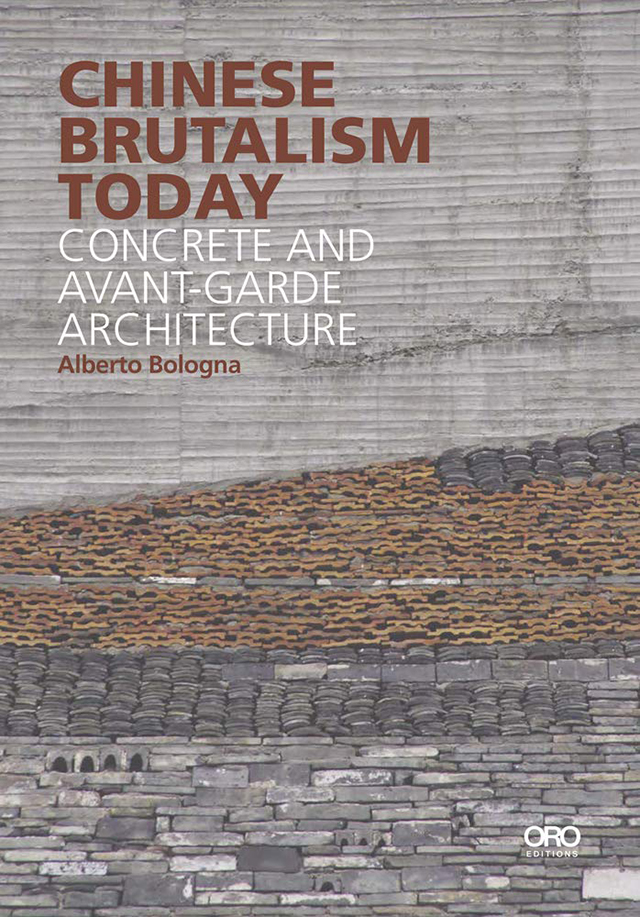Chinese Brutalism Today
Chinese Brutalism Today: Concrete and Avant-Garde ArchitectureAlberto BolognaORO Editions, November 2019Paperback | 8-1/4 x 10-3/4 inches | 300 pages | English | ISBN: 978-1943532384 | $45.00PUBLISHER'S DESCRIPTION: Chinese Brutalism Today: Concrete and Avant-Garde Architecture is divided into three chapters and ends with a methodological afterword that explains the reasons why the research was carried out and the scientific tools used. The first chapter is “Exposed concrete in the design process,” the second is “Identity Research: Towards an Ornate Surface” and the third is “Global ambition: towards a polished surface.” The narration takes place through a substantial written part accompanied by specific images that facilitate the understanding of the text. Transversally, in the narrative, an interpretation is given to the precise and ambiguous dictates announced in 2017 by President Xi Jinping: to pursue a contemporary architecture made of “international standards with Chinese characteristics.” Alberto Bologna is an architect, Ph.D. in history of architecture and town planning, currently assistant professor of architecture and urban design at DAD-Department of Architecture and Design at Politecnico di Torino, in Italy. REFERRAL LINKS: dDAB COMMENTARY: When Chinese architect Wang Shu, co-founder of Amateur Architecture Studio with his wife, Lu Wenyu, won the Pritzker Architecture Prize in 2012, China was in the midst of a massive program of urbanization that saw the erection of cookie-cutter high rises and the destruction of traditional buildings in rural villages. The architecture of the couple presented an alternative, an antidote to the rapid modernization and the erasures of history taking place. Their buildings were relatively small and slow, and, through the incorporation of materials salvaged in demolitions, they maintained some continuity with China's deep and rich history. The building that drew the most attention when Shu's Pritzker was in the press was the Ningbo History Museum, completed five years earlier. Its stacked walls of clay tiles and other salvaged pieces of masonry were a clear expression of the firm's position toward history as well as their skill in architectural design and construction. A photo of the museum graces the cover of Alberto Bologna's ambitious, scholarly book on avant-garde architecture in China, a signal that Wang Shu's Pritzker was not a fluke. His work can be seen as part of a wider movement, if you will, that presents bespoke, highly tactile buildings running counter to the trend of polished, repetitive modern buildings of a much larger scale. Concrete is the material that binds the buildings Bologna calls avant-garde and brutalism — two terms that I'll admit did not spring to mind when previously considering them. Rather than presenting buildings by Amateur Architecture Studio, Atelier Deshaus, Vector Architects, ZAO/standardarchitecture, and other Chinese firms individually or grouped by architect — what would be akin to other contemporary collections on the country's architecture — the author discusses them in terms of various themes he has developed through his research and teachings in Italy and China. These themes are structured in three sections related to concrete: "Exposed Concrete in the Design Process," "Identity Search: Towards an Ornate Surface," and "Global Ambition: Towards a Polished Surface." The country's avant-garde brutalism is explored trough words and images, with many of the latter by the author and some depicting the buildings under construction. The book excels when the text and images are united, when Bologna is discussing the details of the concrete and wa pan masonry walls of the Ningbo History Museum, for instance, or the "tattooing" of such exposed concrete buildings as West-line Studio's Shui Cultural Center (first spread below). But too much of Bologna's lengthy text is verbose, something that could have been overcome easily with the right editing. As is, the author's writing makes fully understanding his ideas and arguments difficult. Fortunately, the occasional synergy of the words and images clearly captures the qualities of the buildings that he was drawn to study and write about in the first place. SPREADS:

Chinese Brutalism Today: Concrete and Avant-Garde Architecture
Alberto Bologna
ORO Editions, November 2019
Paperback | 8-1/4 x 10-3/4 inches | 300 pages | English | ISBN: 978-1943532384 | $45.00
PUBLISHER'S DESCRIPTION:
REFERRAL LINKS:
SPREADS:










